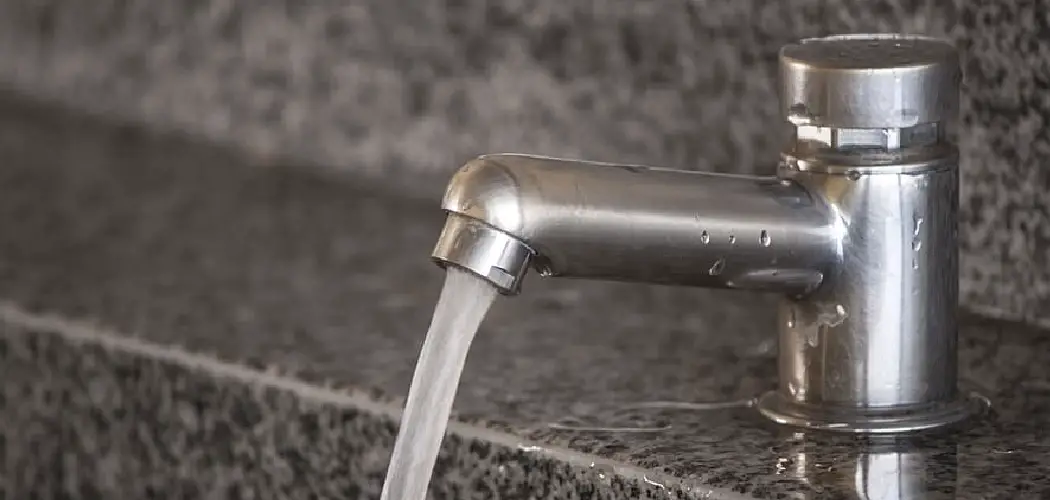There are several reasons why it is important to stopping running water from tap. Firstly, a continuously running tap can lead to significant wastage of water, which is a precious resource that we should all strive to conserve. Every drop of water counts, and learning how to properly shut off your tap can go a long way in reducing your environmental impact.
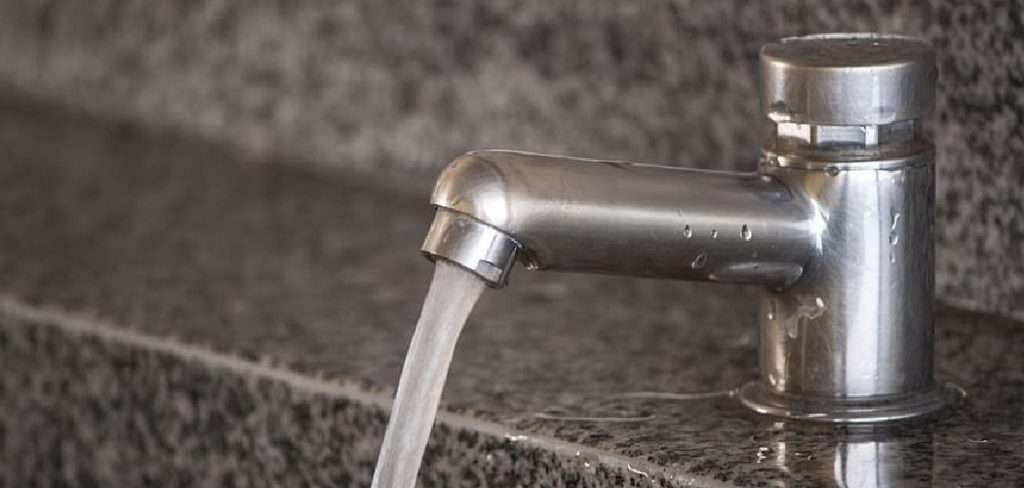
The main advantage of learning how to stop running water from the tap is that it can save a significant amount of water and money in the long run. By understanding how to properly turn off taps, we can prevent unnecessary wastage of this precious resource. You can find step-by-step instructions on how to stop running water from tap in this blog article.
Step-by-step Instructions for How to Stop Running Water From Tap
Step 1: Inspect the Tap
The first step to stop running water from a tap is to inspect the tap itself. Check for any visible cracks, leaks or loose parts on the tap. If there are any, you will need to replace or repair them before proceeding.
Step 2: Turn Off Water Supply
Before attempting to fix the tap, make sure to turn off the main water supply. This will prevent any water from flowing out while you work on the tap. The main shut-off valve is usually located near the water meter or under the sink.
Step 3: Gather Tools and Materials
To fix a running tap, you will need a few tools and materials such as an adjustable wrench, screwdriver, replacement parts (if needed), plumber’s tape, and a cloth or towel. Make sure to have everything on hand before starting the repair. Use the screwdriver to remove the tap handle and expose the valve. Then, use an adjustable wrench to loosen and remove the packing nut. Once removed, you can access the cartridge or ball inside.
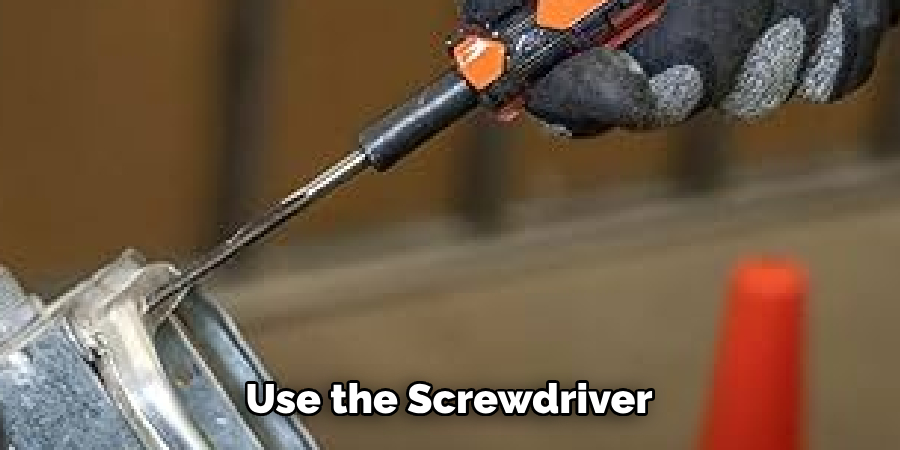
Step 4: Clean or Replace Cartridge/Ball
Inspect the cartridge or ball for any visible damage or debris. If there are any, try cleaning them with a cloth and some vinegar. If the damage is extensive, you may need to replace the cartridge or ball. Once the cartridge or ball is clean or replaced, put everything back in place by following the reverse order of disassembly. Make sure to tighten the packing nut and reattach the tap handle securely.
Step 5: Turn On Water Supply
After reassembling the tap, turn on the main water supply and check for any leaks or issues with the tap. If the running water issue persists, it may be a problem with your plumbing system. Check other taps in your house to see if they have the same issue. If they do, you may need to call a plumber for further assistance.
Step 6: Prevent Future Issues
To prevent future problems with running water from your tap, make sure to regularly inspect and clean your taps. Additionally, avoid using excessive force when turning the tap on or off, as it can cause damage over time.
Fixing a running water issue not only saves you money on your water bill, but it also helps conserve water. By taking care of any leaks or issues with your taps, you are doing your part in conserving this valuable resource. Remember to always be mindful of your water usage and do your best to conserve whenever possible.
7 Safety Tips for How to Stop Running Water From Tap
- If possible, turn off the main valve that supplies water to your entire house. This will completely stop running water from the tap and prevent any further damage.
- Make sure to close all taps properly after use. Oftentimes, people forget to shut off the tap completely which can lead to a lot of wasted water and an inflated bill.
- Check for leaks regularly. If you notice any leaks, make sure to get them fixed as soon as possible. A leaking tap can cause a lot of damage over time and also lead to an increased water bill.
- Always monitor your water bill. If you notice a significant increase in your bill, it could be due to running water from a tap that has not been shut off properly.
- Keep extra washers and other parts that may need replacement on hand. This will help you in case of any emergencies where a part needs to be replaced in order to stop the water from running.
- Avoid using too much force when turning off taps. Many times, people tend to use excessive force when closing taps which can lead to damage or even cause them to break.
- If nothing else works, call a professional plumber. Attempting to fix a running tap on your own can be dangerous and may cause more damage if not done correctly. A professional plumber will have the necessary tools and expertise to fix the issue quickly and efficiently.
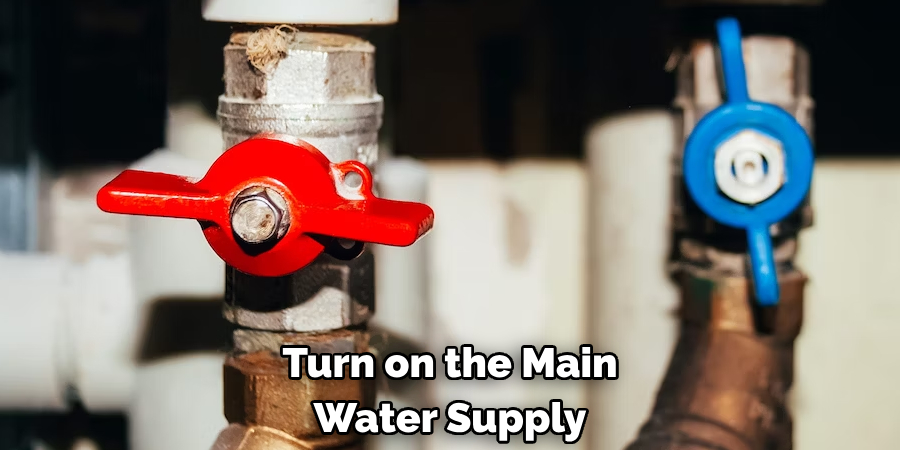
These safety tips are important for everyone to follow in order to prevent any unnecessary wastage of water or damages caused by running taps. It is also important to be mindful of our water usage and make sure not to leave taps running for prolonged periods of time.
What Should You Do if You Can’t Find the Source of the Running Water?
In some cases, finding the source of running water can be challenging due to various reasons. Here are some possible causes why you may not be able to locate the origin of the running water.
1. Underground Sources
Some sources of running water may be located underground, making it difficult to pinpoint their exact location. These sources could be natural springs or man-made structures such as wells or boreholes. In such cases, special equipment and expertise may be needed to locate and access the source.
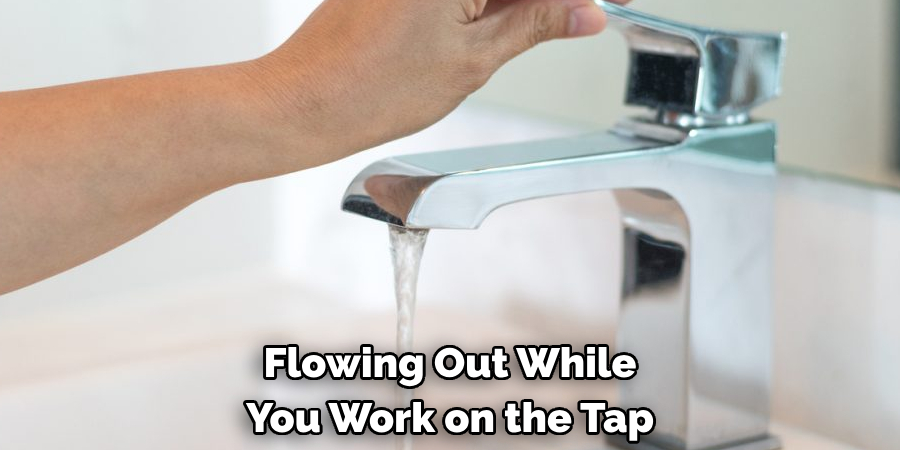
2. Hidden Pipes
In urban areas, it is common for running water to come from a network of pipes that are hidden underground or within buildings. This makes it hard to identify the exact source of the water. Additionally, these pipes may be connected to a larger water supply system, making it even more challenging to trace the source.
3. Rainwater diversion
Some buildings and structures have systems in place to divert rainwater away from the structure’s foundation or roof. This means that the running water you hear or see could be coming from a completely different location than expected.
4. Faulty Plumbing
If you are unable to locate the source of running water within your own home or property, it is possible that there may be a leak or faulty plumbing system causing the water to flow from an unexpected location. In such cases, it is best to consult a professional plumber for assistance in identifying and fixing the issue.
By understanding these reasons for unidentified running water sources, you can better assess the situation and determine the best course of action to take in locating and addressing the source. Remember to always consider safety precautions when dealing with any potential water source, and seek professional help if necessary.
How Long Does It Take for a Tap to Stop Running After Being Turned Off?
One of the most common questions people have about their plumbing is how long it takes for a tap to stop running after being turned off. The answer depends on several factors, including the type of tap you have, the water pressure in your home, and any potential issues with your plumbing system.
The average time for a tap to stop running after being turned off is around 5 seconds, but this can vary greatly. Older taps or those with worn out washers may take longer to stop running as they may not seal completely when turned off. In contrast, newer taps with ceramic disc valves can stop running almost immediately due to their more efficient design.
Water pressure is another factor that affects how long it takes for a tap to stop running after being turned off. Higher water pressure means that more water is being forced through the tap, which can result in a longer wait for the water to fully stop flowing.
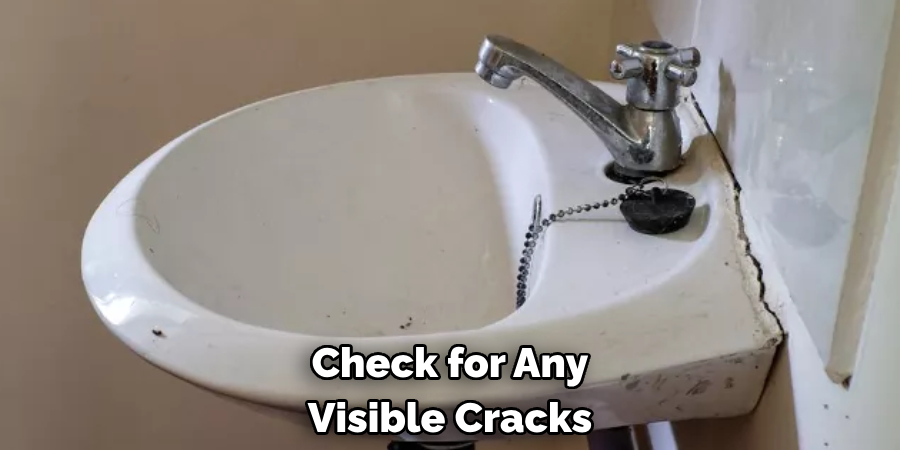
Alternatively, lower water pressure may result in a quicker halt to the flow of water. In addition, there are other potential issues with your plumbing system that could affect how long it takes for a tap to stop running after being turned off. For example, if there is a blockage in the pipes or an issue with the main water line, it could take longer for the tap to stop running due to reduced water flow.
What Are Some Common Causes of a Tap Continuously Running?
One common cause of a tap continuously running is a faulty faucet or tap mechanism. This can occur due to wear and tear over time, or even from a single incident such as accidentally pushing the faucet handle too hard. Another possible cause is a worn out washer inside the tap. The constant flow of water can wear down the rubber washer, causing it to become warped or damaged. This can result in water continuously leaking out of the tap, even when it is turned off.
In some cases, a tap may continuously run due to a broken pipe or plumbing issue within the system. If there is a crack or break in the pipes that supply water to the tap, it can cause water to constantly flow out. This often requires professional plumbing services to fix. Another common cause of a tap continuously running is mineral buildup or debris clogging the faucet aerator. This can prevent proper water flow and result in a constant drip or stream of water. Regular cleaning and maintenance of the aerator can help to prevent this issue.
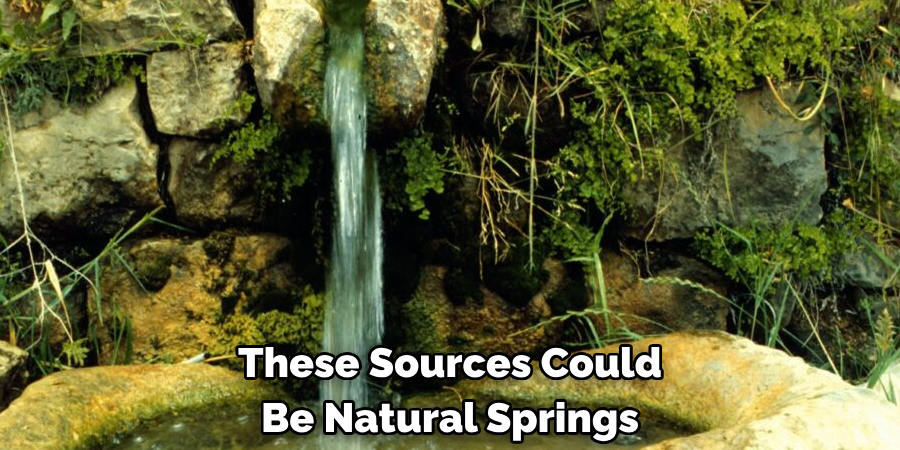
How Can You Prevent a Tap From Running in the Future?
1. Regular Maintenance and Upkeep
Keeping your taps in good working condition is key to preventing future problems. Regularly check for any leaks, drips or other signs of wear and tear and address them immediately. This will not only save you money on water bills, but also prevent larger issues from arising in the future.
2. Proper Installation
When installing a tap, make sure to follow the manufacturer’s instructions carefully. Improper installation can lead to leaks and other issues down the line. If you are unsure about how to install a tap, it is always best to consult a professional plumber.
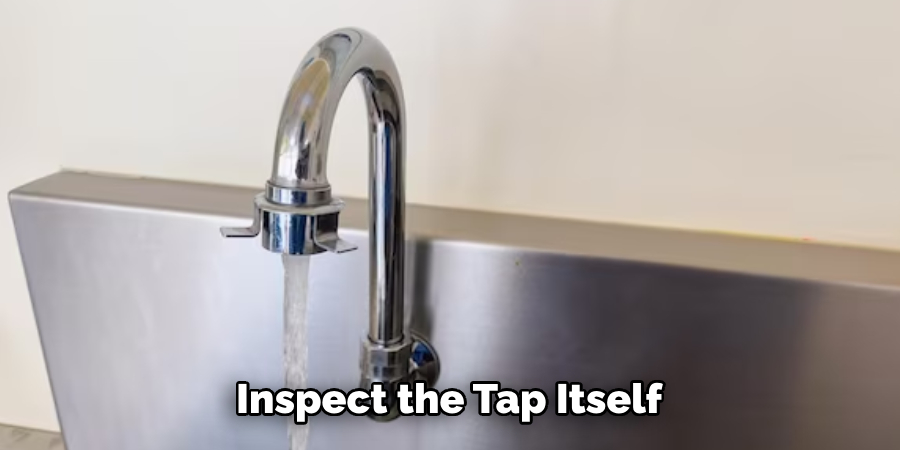
3. Use Quality Materials
Investing in high-quality taps and materials may be more expensive upfront, but it will save you money in the long run. Cheaper materials are more prone to wear and tear and may need to be replaced more frequently, leading to higher costs in the future.
4. Be Mindful of Water Pressure
High water pressure can put a strain on your taps and cause them to wear out faster. If you notice that your water pressure is too high, consider installing a pressure regulator to ensure your taps are not being overworked.
5. Proper Use and Care
Teaching household members to use taps properly can also prevent future problems. Make sure everyone knows not to force the tap handle or turn it too tightly. Additionally, regularly clean and maintain your taps to prevent any build-up of grime or debris that could lead to issues.
6. Address Issues Promptly
If you do notice any leaks, drips or other problems with your taps, it is important to address them promptly. Ignoring these issues can lead to more significant and costly repairs in the future.
By following these tips, you can prevent your taps from running in the future and ensure they continue to work efficiently for years to come. Remember to also consult a professional plumber if you encounter any major issues or are unsure about how to properly maintain your taps.
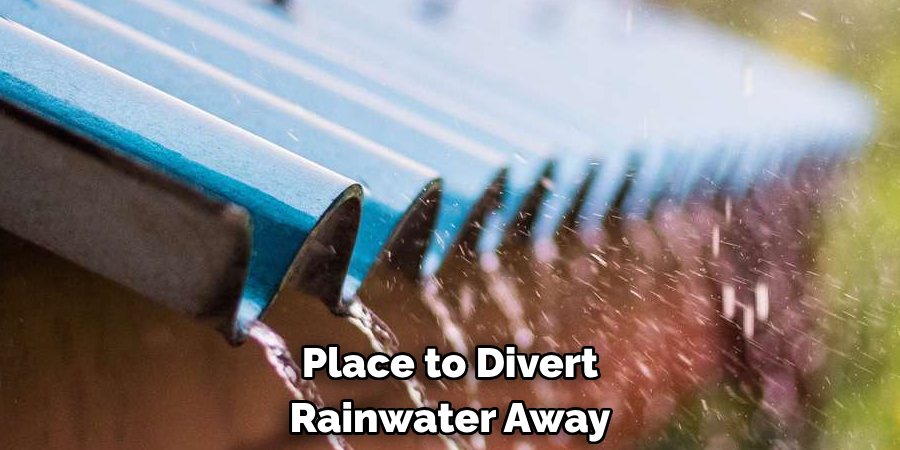
Conclusion
In conclusion, while knowing to stop running water from tap is important, there are also some disadvantages that come with it. One major disadvantage is the potential for increased water bills due to leaks or constant drips. Not only does this waste resources and contribute to environmental concerns, but it can also lead to higher utility costs for homeowners.
Ignoring the problem or attempting to fix it yourself without proper knowledge and tools can result in further damage and costly repairs. Furthermore, constantly running water from a tap can also be a nuisance and disrupt daily activities. The sound of dripping water can be irritating, especially when trying to sleep or concentrate. I hope this article has been beneficial for learning how to stop running water from tap. Make Sure the precautionary measures are followed chronologically.

